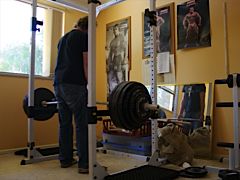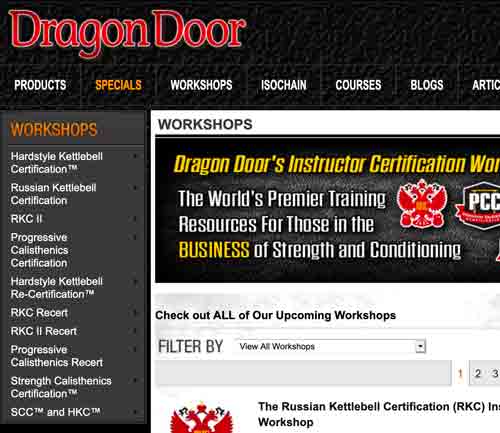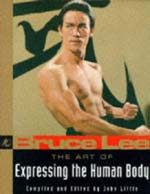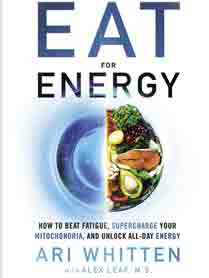 Gem From The Vault : A Brief History of Circuit Training and Peripheral Heart Action (PHA)
Gem From The Vault : A Brief History of Circuit Training and Peripheral Heart Action (PHA)Scott Andrew Bird
Where it all began.
 Looking At : Sep 11, 2022
Looking At : Sep 11, 2022Scott Andrew Bird | follow @scottbird
What’s been going on this week? Quite a lot actually.
Over to you. I’d love to hear what you think : leave your comments on the above articles, and share them with your friends/colleagues/clients and so on.
NB : if you’re keen to do a little fitness writing and would like to submit your own piece for Straight to the Bar, get in touch.
Video : Did The Apple Watch Ultra Just Kill Garmin? A Triathlete’s Impressions (Matt LeGrand)
Interesting take on the Apple Watch Ultra, from a member of what I suspect is the device’s target demographic. Any of the triathletes here looking to get one? Would love to hear your thoughts.
Gymchat 278 – TBA
We’re still finalising the details for this week’s discussion. I’ll post them on the blog (and Twitter, Facebook etc) shortly. In the meantime, take a look at some of the previous episodes of the show – (there’s an example below, and a full list here). And if you’ve got any questions or comments on the various topics discussed, we’d love to hear them. Just leave a note below the video.Previously : In Gymchat 176 we discussed Fitness & Health Devices with Ultrarunner, Airline Captain And Insanely Competitive Triathlete, Chas Melichar. Great conversation.
NB : If you’d like to take part in a future episode – either as an interviewee, or as a guest host – just drop us a line. Love hearing how everyone else trains.
Checking Out : ESERMUG (Temperature Controlled Mug With Medical Sensors)
Very interesting combination. The ESERMUG is a blend of coffee mug and medical sensors, which are placed in the areas you’d be touching anyway. Along the handle, primarily. The data is sent to a companion app on your ‘phone, and from there to a relevant family member or medical practitioner if desired. A little video to showcase the idea :The ESERMUG.
Ever Tried Kettlebells?
If you've seen people using them but never taken the plunge yourself, here are the ones I use personally. You can also pick up a book/DVD/course if you want to learn how to put them to work.
Tip of the Week : Addressing Squat Weaknesses – Bending at the Knees First
Each week we publish a number of tips and techniques via Twitter, the blog; and the newsletter. Wherever you are, there’s always a way to improve what you’re doing.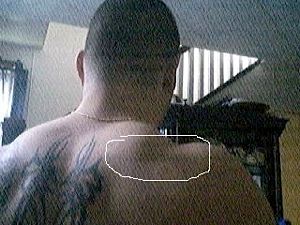
When it comes to the squat, Powerlifter Rick Walker clearly knows what he’s talking about. If you’ve ever tackled this wonderful exercise yourself and felt that your form just didn’t feel quite right, check out his article Addressing Weaknesses in The Squat. To give you an idea of what it’s all about, here’s how he corrects one of the more common problems found in squat technique – the simple act of Bending at the Knees First. Over to Rick.
This is a common problem among many beginning squatters as the lifter is usually afraid of falling backwards with the weight. Instead of sitting back first, the lifter will bend at the knees to go down. This causes the knees to go forward well over the toes and often times causes the lifter to go up onto their toes in the hole. This is not only dangerous, but you are limiting how much you can squat. The pressure on the patellar tendons in this position is tremendous and leads to big time problems down the road. Yes, some lifters, especially Olympic lifters, can adapt to these kinds of stresses from having their knees that far forward. However, the goal here is to improve the squat and move more weight, and that will be accomplished by sitting back into the squat.And yes, I can assure you that it works. Cheers, Rick.How to fix it
The lifter must learn to sit back and not down. This can take a long time to get them to do, and even longer to get them to do it under maximum loads. I start all newbie squatters on a box. I use a very high box and a very light load, usually the empty bar with some light JumpStretch© bands attached for tension. The basic commands I give are for the lifter to sit back like he is searching for a chair that is behind him. Once the lifter can get down to the high box by sitting back, I lower it an inch and start all over. Eventually the lifter will be able to sit back to a parallel box and the movement will become second nature. Another possible reason for the lifter’s inability to sit back is hamstring strength. If the lifter has weak hamstrings, he won’t be able to sit back into a squat without falling. It gets much worse as the weight increases. To address this, get the lifter on the glute-ham machine pronto! This is the best way to bring up lagging hamstrings and prepare the lifter for handling more weight in the squat correctly. I have also found Romanian Deadlifts and reverse hypers to be effective for improving the sit back portion of the squat.
Unlock Your Hips, Unlock Your Squat
I get a lot of questions regarding the impact of ‘unlocking your hips‘ on heavy squatting. Rick Kaselj goes into it in plenty of detail in the ‘Unlock Your Hip Flexors‘ program; and I’ve also posted a brief video below which demonstrates/explains some of the exercises.Both (working with Ryan, and Rick’s program) are highly recommended. And as always, we love hearing your feedback – if you sample any of the above exercises or the ‘Unlock Your Hip Flexors‘ program, we’d love to hear about it.
Exercise Of The Week : Cross-Legged Overhead Kettlebell Press
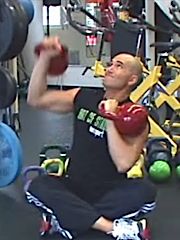 This week’s Minute of Strength newsletter contains video of a very interesting move – the Cross-Legged Overhead Kettlebell Press. Whilst the exercise itself is fairly straightforward, the idea of crossing your legs before performing seated overhead work (whether using kettlebells or not) is definitely worth thinking about.
This week’s Minute of Strength newsletter contains video of a very interesting move – the Cross-Legged Overhead Kettlebell Press. Whilst the exercise itself is fairly straightforward, the idea of crossing your legs before performing seated overhead work (whether using kettlebells or not) is definitely worth thinking about.
Incidentally, if you’d like to get in touch regarding this or any other aspect of strength, you can contact me here. Look forward to hearing from you.
